When my neighbor cleaned out her garage, she gave me an aluminum lawn chair. When I turned to YouTube for the instructions on how to re-web it, I discovered that people were using macramé cord to weave new seats onto old frames. I immediately wanted more chairs.
As luck would have it, someone on FreeCycle posted a bunch of them that day. Unfortunately, it was another “curb alert,” meaning that instead of arranging for a pick-up, interested parties were to drive across town and hope for the best. I resist these offers, which is (or used to be) against the FreeCycle policy. People racing to get something only to find that the item in question is gone defeats the purpose of reducing waste. Indeed, curb alerts never go my way.
But I was desperate. At a quarter to ten, bleary-eyed and half asleep, I pleaded my case to Brian. The chairs will be gone by morning! Nevertheless, at the reasonable hour of 6 a.m., we pulled up to a stranger’s house in a strange neighborhood in the exurbs. One chair and a chaise lounge that I didn’t want were still left. I took them both.
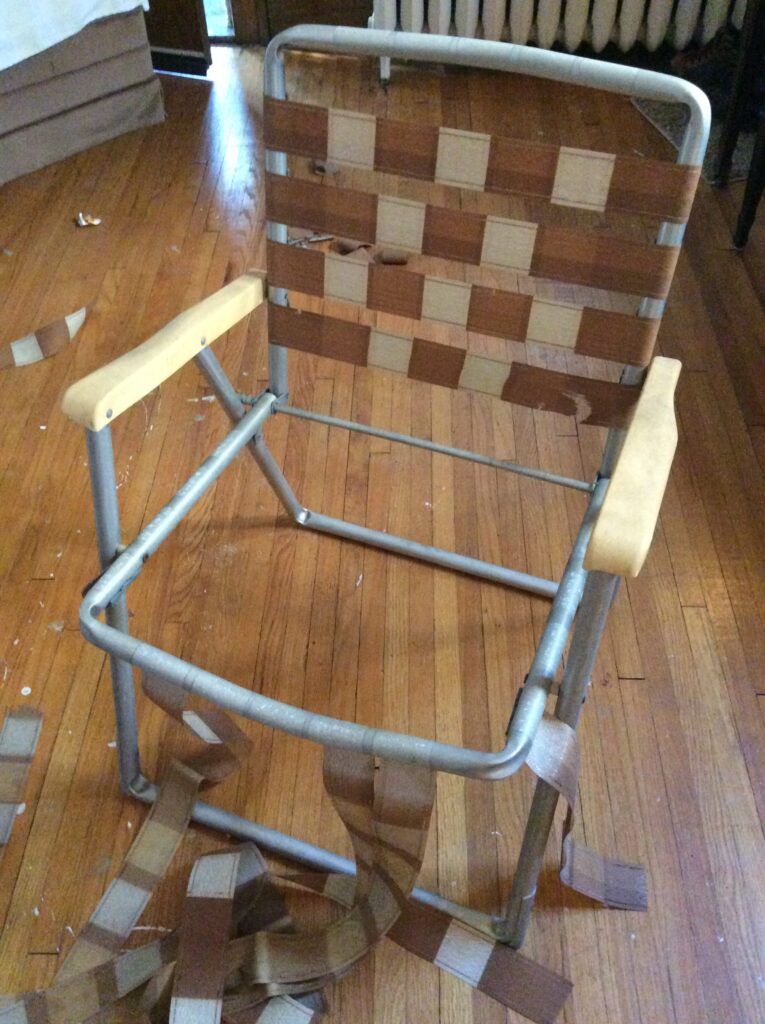
After cleaning the frame with Dawn dish-washing soap and a Scotch-Brite pad, I went over it with Krud Kutter. Then I remembered I had a buffing wheel that attaches to the drill and some polishing compound. So, I tried that too, including on the plastic arms. I’m not confident with the buffing. Most of the instructions I found were of an industrial nature (motorcycles and semi-trucks).
Choosing the cord was easy, as there was only black, white and tan available.
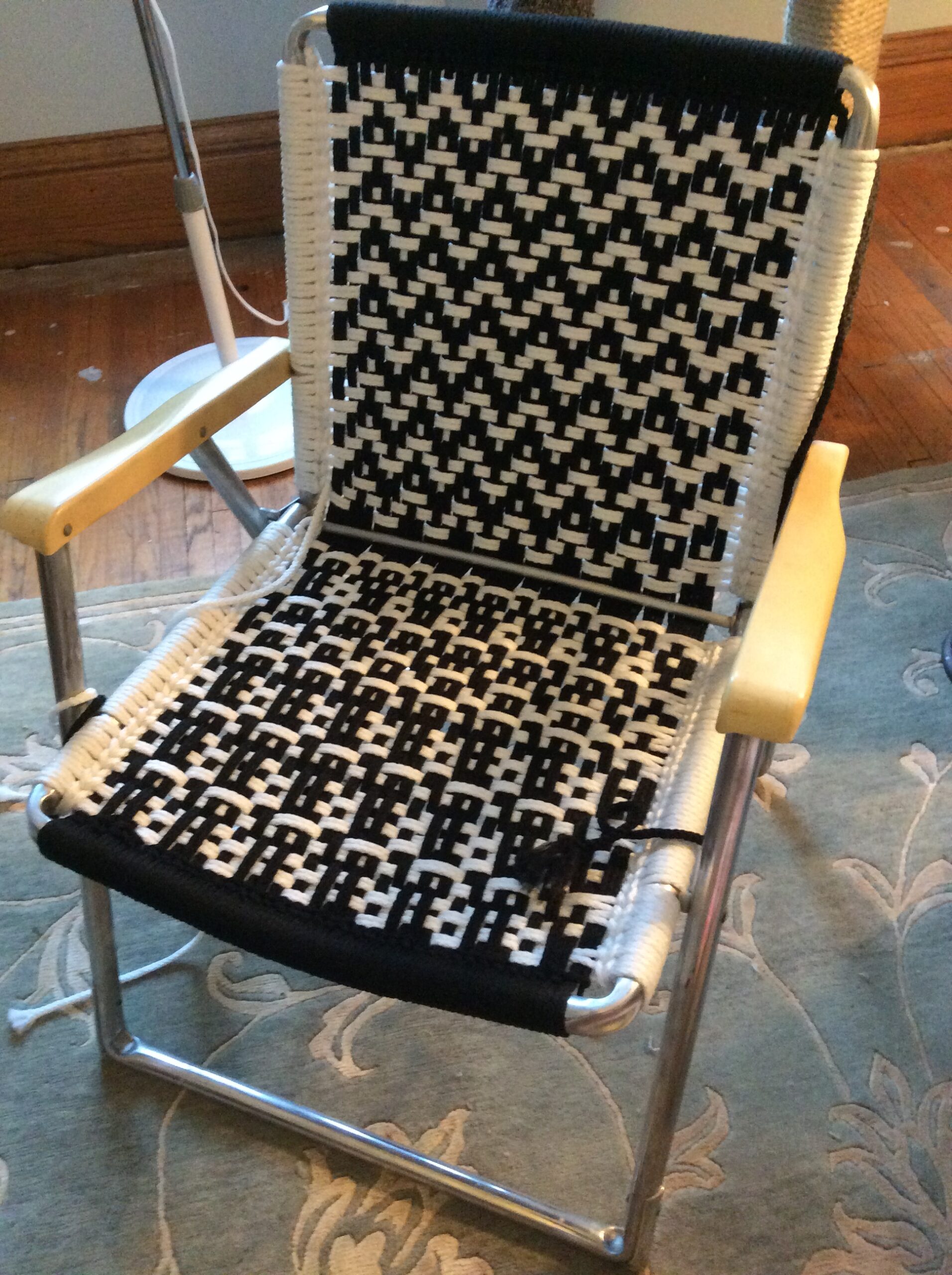
As for the pattern, I chose something I found in an old book about weaving: Weaving: A Handbook of the Fiber Arts by Shirley Held. The back of the chair is a herringbone twill:
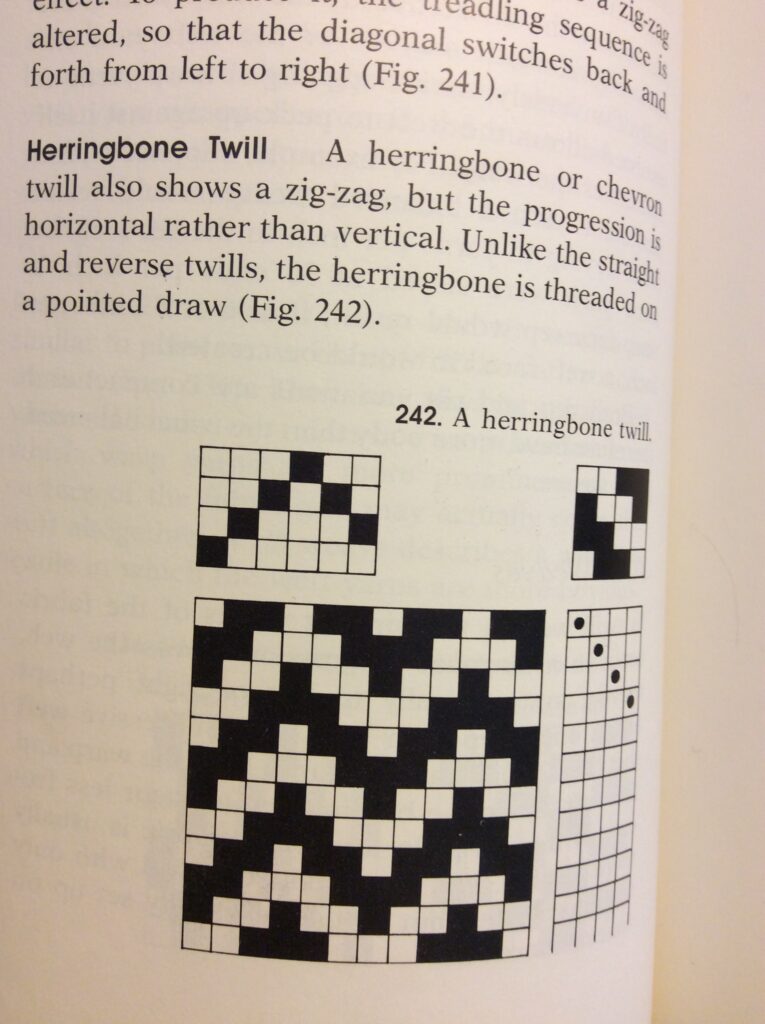
I made a cheat sheet with the pattern and kept track of rows on a separate card. This pattern is made up of four rows that repeat.
O=over, U=under
Row 1: Offset O2, then start the repeating pattern U3, O3
Row 2: Repeat U1, O2
Row 3: Offset U2, then start the repeating pattern O3, U3
Row 4: Repeat U1, O2
I worked from the bottom to the top. However, not all YouTubers agreed on this. Some went from the top down.
The seat of the chair was a pattern called a cord velveret.
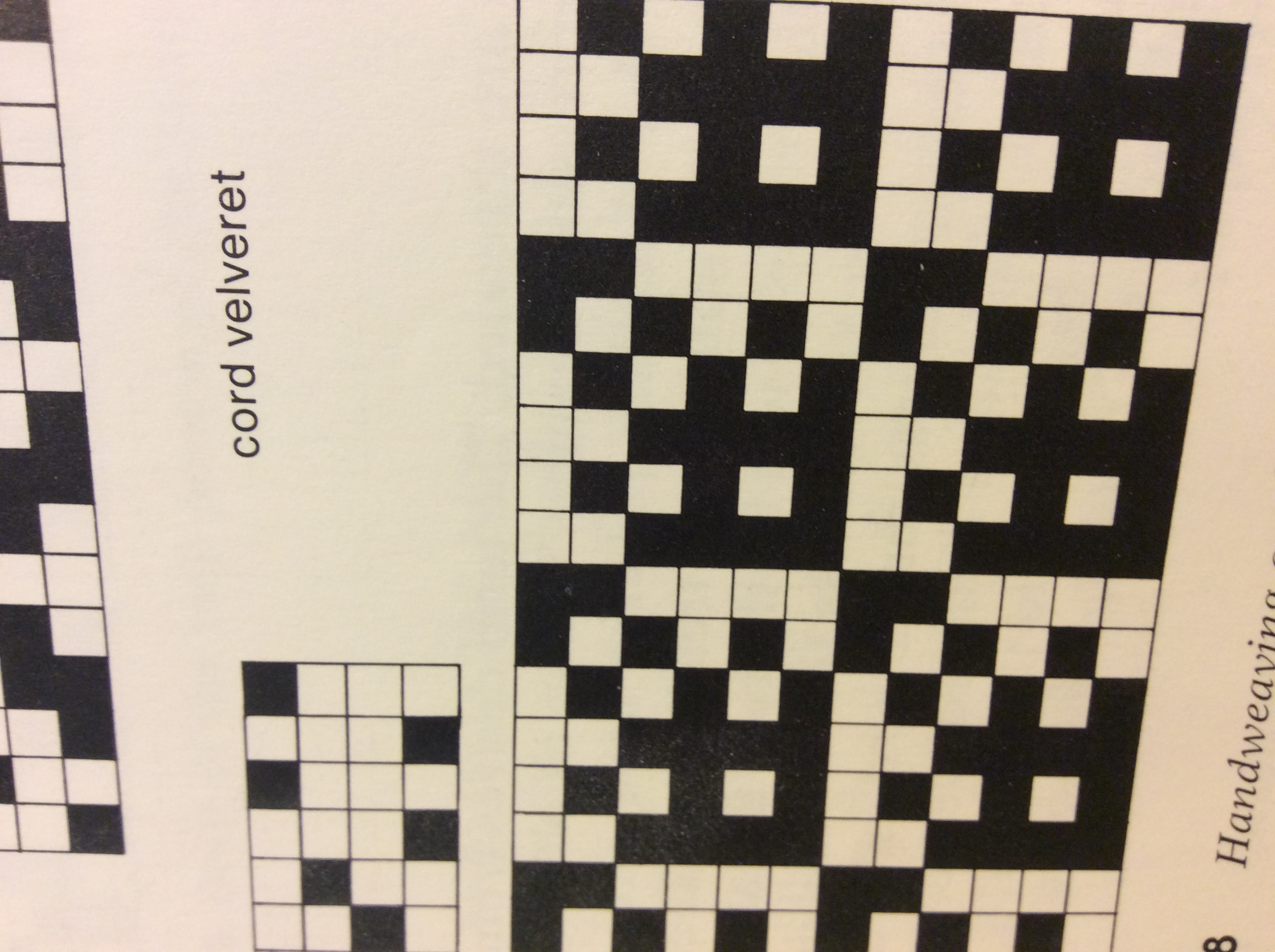
This pattern is made with six repeating rows:
Row 1: U2, O4
Row 2: O1, U1
Row 3: U1, O1
Row 4: O2, U4
Row 5: U1, O1
Row 6: O2, U4
If you look closely (or maybe not so closely), you can see that I messed up the pattern on the seat. But I made the call: Good enough. Let’s get at least one chair under my belt before the summer’s end!
I was struck by how simple these patterns were and wondered what calculation or principle was behind them. I can copy something. But could I create a repeating pattern from scratch? Learning about the circle of fifths struck me in a similar way. How did anyone ever figure out the pattern? Brian had the same reaction. As I was marveling over these weaving patterns, without my prompting, he also said that it reminded him of the circle of fifths (or the way that I marveled over that too). And then I read this in Held’s book in chapter nine about drafting weaving patterns:
“Drafting has often been compared to musical notation, and in some ways the analogy is accurate. However, unlike the symbols used in music, the shorthand of drafting is not universal… We occasionally hear of great singers or other musicians who cannot read music. Similarly, many experienced weavers can neither read nor write drafts, preferring to design on the loom….”
While this doesn’t quite get at my amazement of how patterns work, the music analogy was close enough to make me think that I was onto something. I just don’t have the words for it. It also makes me wonder if a weaving pattern could be translated into music. What does a reverse twill sound like? Or the other way around. What is Für Elise as a chair? I once saw novels being depicted as colors based on sentence length. It reminds me of that. Unfortunately, I can’t find an example of it.
There are some really cute macramé lawn chair patterns out there. I even saw one with a cow that would be perfect for my mother.
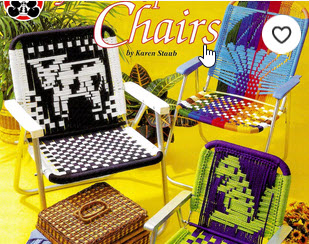
As for my first chair, I don’t have a good answer to the the question “How long did it take?” Should I count the learning? The redoing? The tears?
I exaggerate. There were no tears. No swearing. Still, while appreciating the free instructions that will get you started on a macramé chair, many gloss over the tricky parts. More than once, my crochet hook went flying across the room with deadly force because I was doing something (I don’t know what) wrong. And despite the claim, the warp (the vertical strings) and the weft (horizontal) are attached differently. It’s not enough to say “It’s just like what you did before.” It isn’t. Many of the instructors I encountered seemed to have forgotten what it’s like to be a beginner. Could it be that some have never actually observed anyone trying to follow their instructions? To be fair, there are the good ones too. And there’s not a room in my house that hasn’t benefited from a DIYer on YouTube. In any case, it took a few different tutorials, all incomplete in their own way, to get a full picture of the steps to weave a macramé lawn chair. Even then, I had to figure out some stuff on my own, like how to deal with a big crochet hook in the corners of the seat. Road signs would have helped. These are the clues you need to check your work. For example:
As you are weaving, you know that you’re ready to start a new row when you see the tail of your string draped over the frame like this:
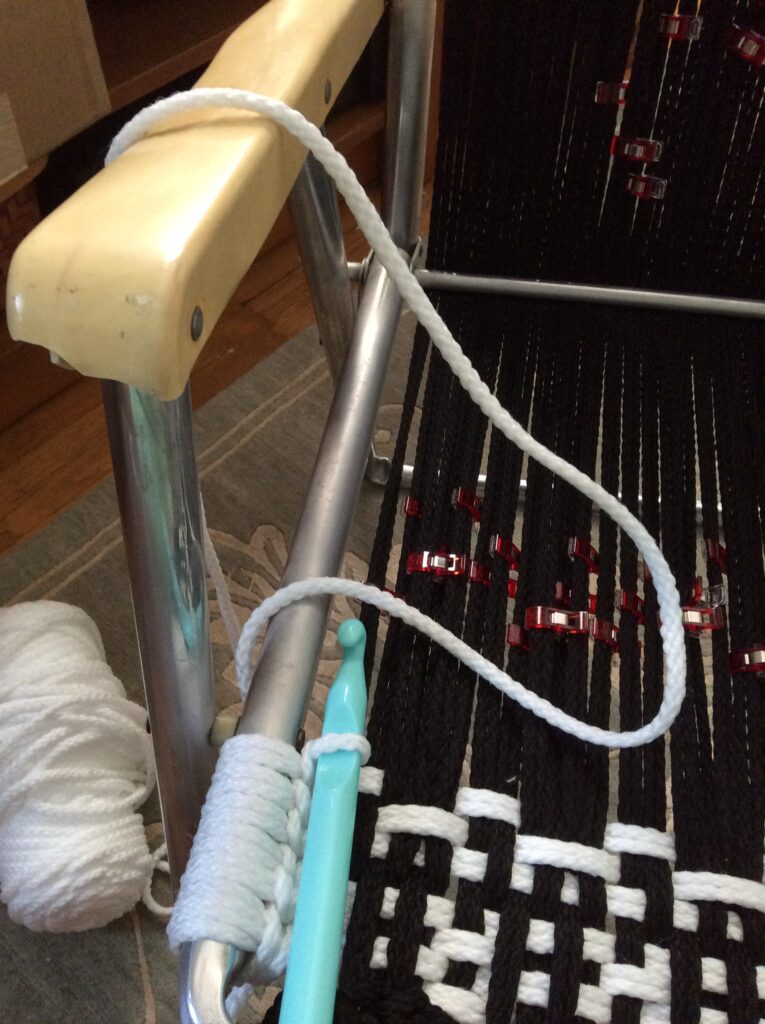
Note the skein of cord is on the ground and feeds over the arm of the chair. However you set it up, it should remain the same throughout the weaving. Otherwise, it’s a clue that you messed up somewhere (which I did many times!). Compare the above to this:
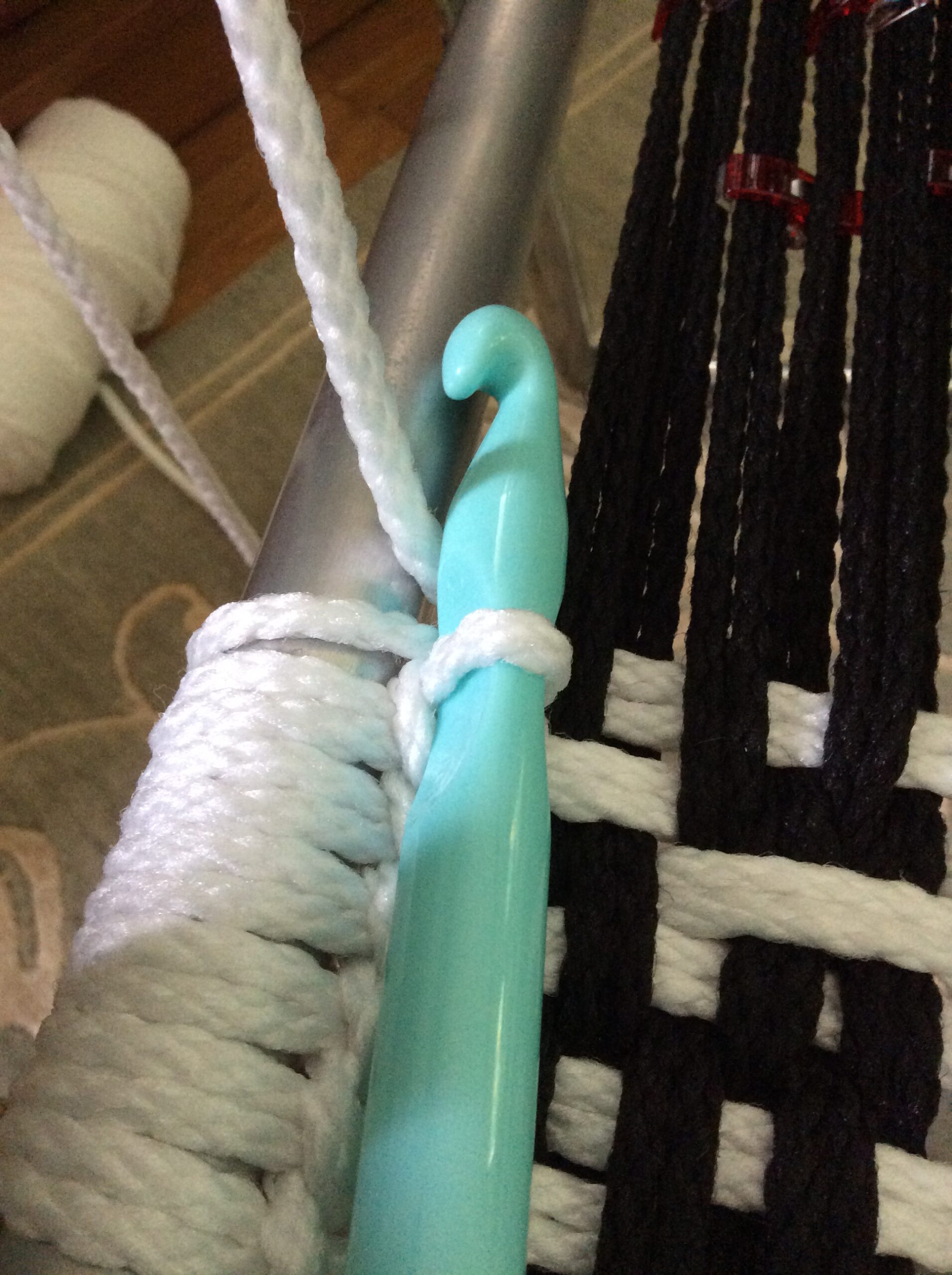
Here we can see the stitch has yet to be complete because it’s pointed away from the center of the chair and it isn’t draped over the top of the frame.
The wonder clips you see were used to pair the threads (2 per knot). For me, it made it easier to count… 1 over, 2 under, etc. And yes. You’re counting sets as opposed to individual threads.
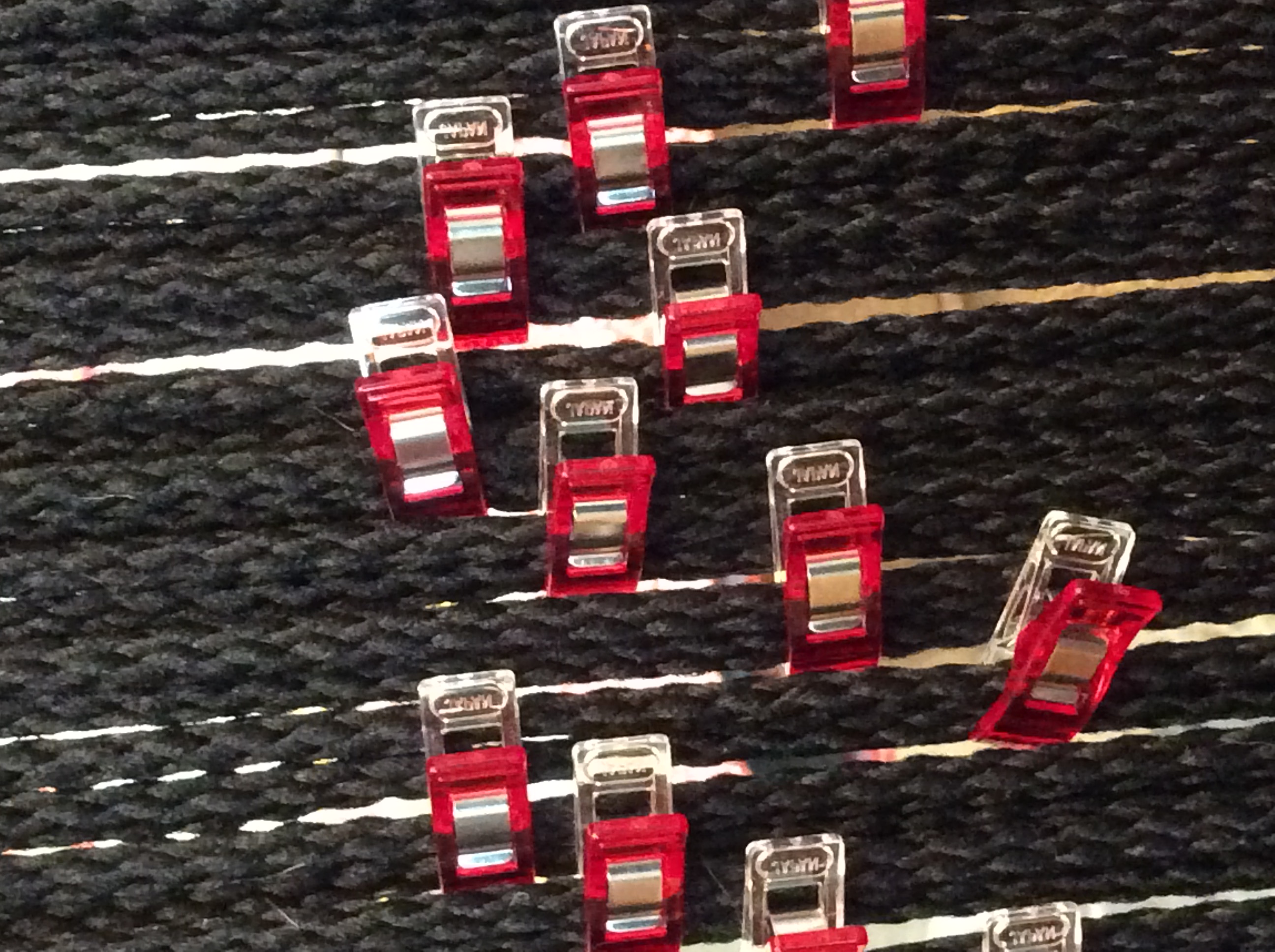
It would’ve also been useful if someone had pointed out that the first set of strings will have three threads per knot instead of two. The confusion caused me to unnecessarily start over. But even after I figured out that this was to be expected, I forgot to account for it when I started my under/over pattern. Half the seat was done before I realized that I’d need to start over. Again, marking this with a Wonder clip eliminated confusion.
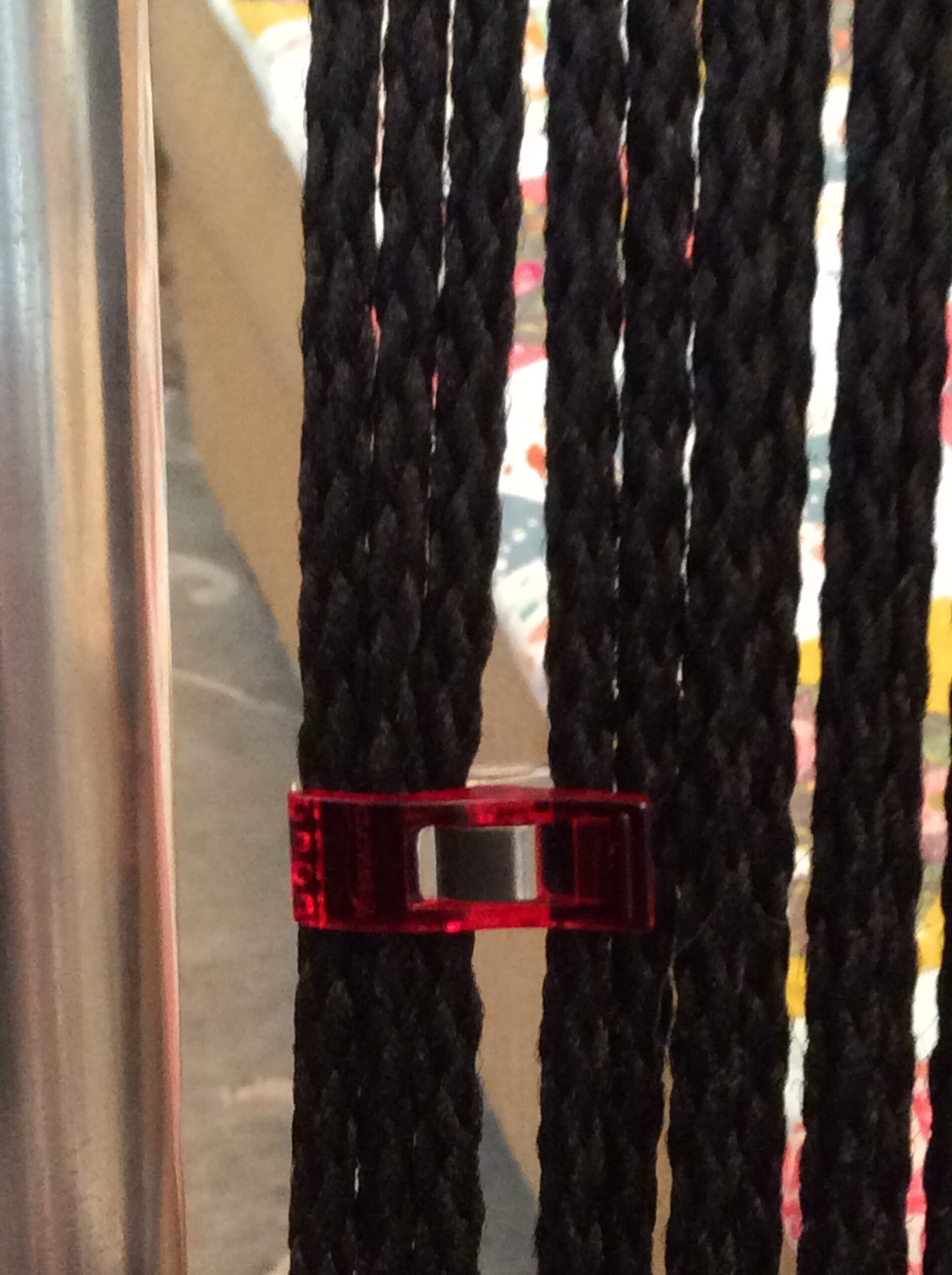
In all of the macramé lawn chair videos that I saw (as opposed to the ones on Danish cord weaving), the chair is finished by cutting the loose ends of the strings short and melting the ends to stop them from fraying. This is a reasonable way to do it. But I suspected that my sister Amy who crochet’s and does macramé would have a better solution and she did. I don’t have pictures of it, but she essentially pulled the loose end behind the first two to three inches of the loops around the frame, being sure to match the colors (i.e., two strings will travel along the white edge and the others along the black). As opposed to letting strings — though cut short — dangle loose, she melted the end as usual and then hid it under the loops. If I do another chair (I have two requests already), I’ll take pictures that show this.
When I showed a picture of a chair to a friend who I don’t think of as being overly sentimental, she admitted to tearing up. For some reason a woven chair touched her. “It’s like bringing back an old art form,” she said. “It’s the best thing you’ve ever done.” I’m not sure about that. But I understand when she says that replacing speaker foam with a frame and some fabric is not as exciting.
I wondered if the chair was good enough to give away.
“Does it still fold shut like a regular lawn chair?” Brian said.
“Yes.”
He sits in it.
“It’s good enough,” he said.
I gave it to my folks, thinking they could use the seating for the July 4 festivities at their house.